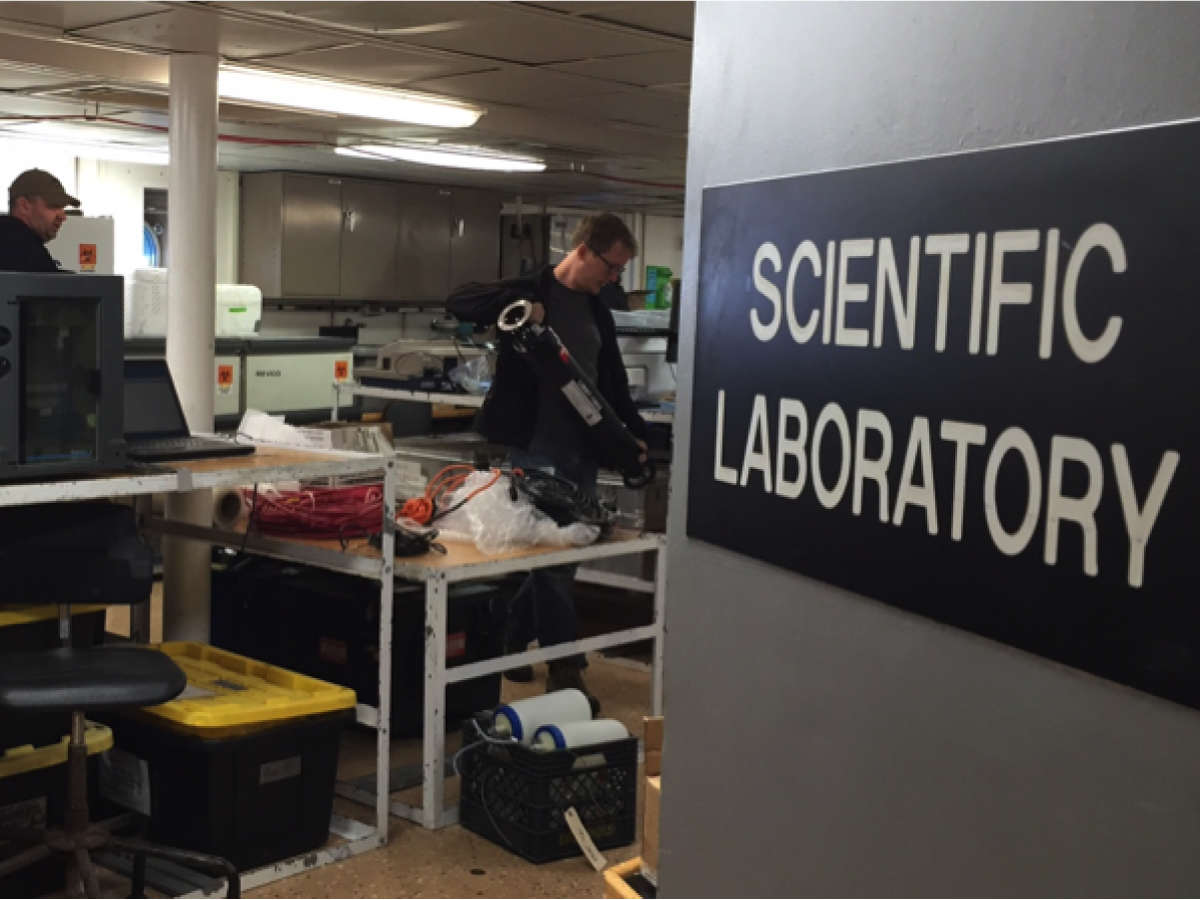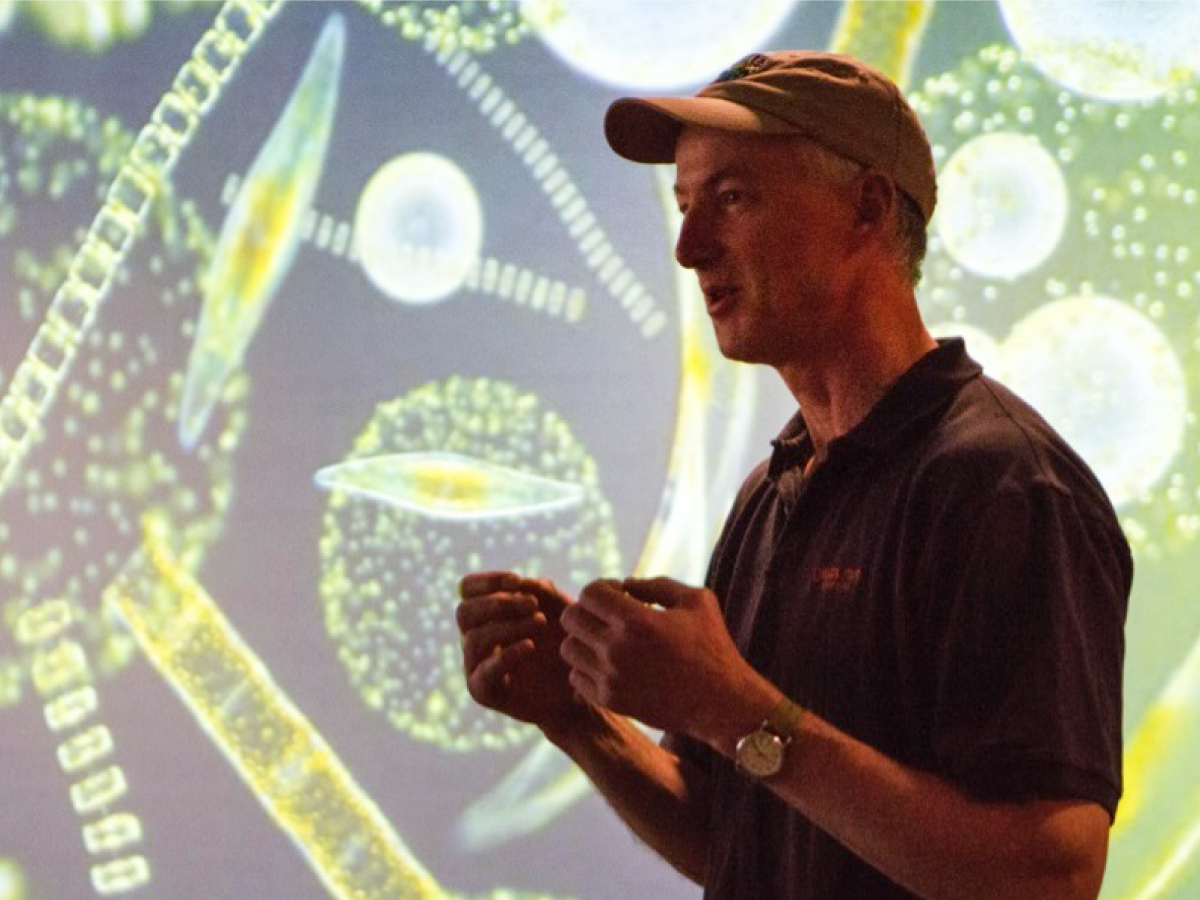
Information obtained during four targeted ship and aircraft field campaigns, combined with continuous satellite and in situ ocean sensor measurements, will enable improved predictive capabilities of Earth system processes for management and assessment of ecosystem change.

The R/V Atlantis in port. Credit: Dick Pittenger (WHOI)

Françoise Morison (URI) and Caitlin Russell secure incubators used to measure phytoplankton growth rates. Credit: Stephanie Schollaert Uz (NASA)

Logan Johnsen, navigator and second mate, studies the weather to plan the best route to the North Atlantic. Credit: Stephanie Schollaert Uz/NASA

Aboard the R/V Atlantis, several cargo containers - assembled and outfitted to create a laboratory (shown here) - are used to test samples for biological, chemical and physical parameters. Credit: Michael Starobin (NASA)

Alvin, a 3-person research submarine, is offloaded from the R/V Atlantis during preparation for NAAMES. Credit: Dick Pittenger (WHOI)

Oceanographer Peter Gaube describes the Conductivity, Temperature, and Depth (CTD) instrument, a cluster of sensors that generate a vertical profile of the water column. Credit: Stephanie Schollaert Uz (NASA)

Bloggers from around the country listen to a presentation by Dr. Mike Behrenfeld (OSU). Credit: Michael Starobin (NASA)

NAAMES Chief Scientist Mike Behrenfeld explains the importance of plankton for life on Earth. Credit: Michael Starobin (NASA)

On May 10, a dedicated group of 20 bloggers travelled to Woods Hole, MA to learn about the NAAMES field campaign. Credit: Michael Starobin (NASA)

Jason Graff (OSU) measures the carbon in phytoplankton and sorts species with a laser-based instrument. Credit: Stephanie Schollaert Uz (NASA)

Cleo Davie-Martin (OSU) measures volatile organic compounds (VOCs) emitted by phytoplankton. Credit: Stephanie Schollaert Uz (NASA)

The R/V Atlantis cruise track (red dashes). Green seas indicate that phytoplankton are starting to bloom in the North Atlantic. Credit: Norman Kuring (NASA)

Every spring and fall, millions of microscopic plants bloom to color the North Atlantic with vivid strokes of blue, turquoise, green, and brown. NAAMES seeks to understand bloom processes for better ocean management and assessment of ecosystem change. Credit: Norman Kuring (NASA)

R/V Atlantis steams away from Woods Hole for a seasonal phytoplankton bloom in the North Atlantic. Credit: Michael Starobin (NASA)

The C-130, carrying airborne instrumentation, approaches Sable Island. Credit: Codey Barnett (NASA)

The NAAMES team prepares a C-130 for flight to St. John's International Airport, where it will rendezvous with the R/V Atlantis. Credit: Denise Wineberry (NASA)

Dendogram illustrating the parameters that will be studied during the NAAMES field campaign.

NAAMES is a five-year investigation to resolve key processes controlling ocean system function, their influences on atmospheric aerosols and clouds and their implications for climate.





















